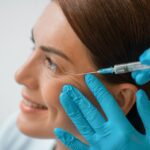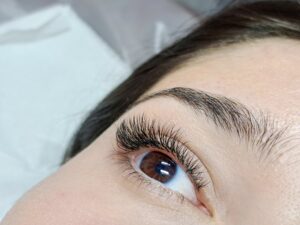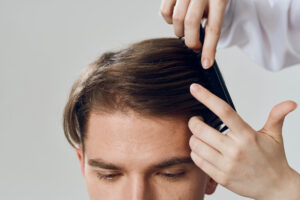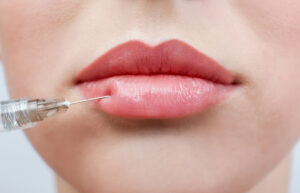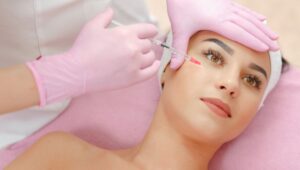Many people resort to facial fillers and botox injections as a way to rejuvenate their skin and maintain their youthful appearance. However, understanding the recovery process and aftercare methods for these treatments is just as crucial as the treatments themselves. In this informative guide, we will discuss details about different aspects of post-treatment care, provide practical recovery tips, and explain how to manage symptoms such as bruising, swelling, and redness.
What does post-treatment care for facial fillers and botox involve?
The Importance of Post-Treatment Aftercare for Fillers and Botox®
After undergoing a cosmetic procedure like getting dermal fillers or botox, it’s extremely important to follow the aftercare instructions provided by your injector. Proper aftercare can significantly influence the success of the procedure, particularly in terms of efficacy and longevity. It can also help minimize complications such as swelling and bruising around the injection site, reduce the risk of infection, and speed up the overall recovery process.
The Role of the Injector in Post-Treatment Aftercare
In cosmetic medicine, a plastic surgery injector plays a pivotal role in ensuring a smooth recovery process post-treatment. Following your botox or filler injections, your injector should provide comprehensive aftercare instructions. This advice typically includes guidance on how to deal with potential side effects such as bruising, advice on medications to be avoided (like aspirin, ibuprofen, and other blood-thinning medications), as well as tips like using an ice pack to alleviate any discomfort or swelling.
Common Challenges of Dermal Filler and Botox® Injection Recovery
Common challenges encountered during the recovery time from botox and dermal fillers include temporary redness, swelling and bruising at the injection site, mild discomfort, and, in some cases, asymmetry during the initial healing stage. Other patients report certain palpable changes like lumps or bumps in the treated area during the recovery process.
How to manage the bruising after facial fillers and botox?
Understanding the Causes of Bruising after Facial Injections
Bruising is a common side effect of getting dermal filler and botox treatments. It occurs when the dermal filler injection disrupts blood vessels under the skin. Certain factors can increase the likelihood of bruising, such as consuming blood thinning substances like aspirin, ibuprofen, fish oil, and vitamin E supplements prior to the treatment.
How to Reduce Bruising after Dermal Fillers and Botox® Injections
To minimize bruising and swelling from botox injections or getting dermal filler, try applying a cold compress or ice pack to the treated area. The application should be done intermittently in the first 24 to 48 hours after treatment and should effectively reduce these symptoms. It’s also recommended to sleep with your head elevated for the first night following filler treatments.
Facts and Myths about Medications and Supplements to Minimize Bruising
Medications such as arnica and bromelain, along with natural supplements like vitamin C, have been claimed to reduce bruising and swelling. However, medical studies evaluating the effectiveness of such treatments have been inconclusive. Patients should always consult with their facial plastic surgeon before taking any medications or supplements to manage the side effects of injectable treatments.
What to expect after a minimally invasive dermal filler treatment?
The Scope of Minimally Invasive Dermal Filler Treatments
Dermal filler treatments are minimally invasive procedures intended to restore volume, smooth wrinkles and enhance the contours of the face. These injectables provide immediate results with minimal recovery time, making them increasingly popular within the field of cosmetic medicine.
Physical Reactions to Dermal Filler Treatment: Redness, Bruising, and Others
Common physically visible reactions after dermal filler injections include redness, swelling, bruising, and tenderness at the injection sites. It’s essential to note these reactions are a natural part of the body’s healing process and usually subside within a week following the procedure.
Tips to Speed Up the Recovery Process of Dermal Filler Injections
Recovery Tips to expedite the recovery process from filler injections include applying a cold pack to the treatment area to reduce swelling, avoiding strenuous physical activities for 24 to 48 hours after treatment, and abstaining from alcohol consumption for at least 24 hours post-treatment to avoid excessive bruising or swelling.
How to take care of your lips after lip filler injections?
Lip Filler Aftercare: Instructions and Recovery Tips
Aftercare for lip fillers involves following advice to decrease swelling like using ice packs and avoiding strenuous exercise. It’s also encouraged to keep the lips moisturized and avoid massaging or disturbing the treatment area for a few days after getting dermal filler injections in your lips.
How Long Does it Take for Lip Injections to Heal?
The initial redness and swelling of lip filler injections often subside within the first week. However, final results aren’t seen until around two weeks following the procedure when any residual swelling has completely subsided. Thus, it’s advisable to wait at least two weeks before considering additional treatments.
Navigating the Dos and Don’ts of Lip Fillers Aftercare
After getting a lip filler treatment, it’s advisable to do things like staying hydrated, avoiding intense workouts for 24-48 hours, and refraining from smoking or drinking from a straw for a few days. Avoiding these activities helps ensure faster healing and optimal results.
Where to seek help and advice post-treatment for facial fillers and botox?
When to Contact Us: Identifying Symptoms that Need Immediate Attention
While most side effects of botox and filler treatments are mild, it’s important to contact your injector or give us a call if you observe any serious side effects including intense pain, pus at the injection site, significant asymmetry, or any unusual skin changes such as a white or blue tint. These symptoms may indicate complications that need immediate attention.
Post-Treatment Follow-Up for Facial Fillers and Botox® Injections
The injector usually schedules a follow-up appointment about two weeks after the botox or filler treatment. This allows for any residual swelling or bruising to subside and for the injector to assess the results and discuss any potential adjustments or additional treatments if required.
Finding Reliable Sources of Information for Aftercare Instructions
For reliable aftercare instructions post-botox and dermal fillers, patients should stick to trusted sources such as a board-certified plastic surgeon or a registered nurse injector. Always feel free to ask any questions or express any concerns with your injector, in order to ensure a safe and successful recovery process.
*Information in this article is not medical advice and may not be factually accurate. It is intended for entertainment purposes only. Consult with a physician before attempting any tips in this blog post and to get the most up to date factual data about any procedure or treatment.





